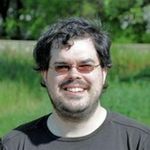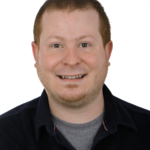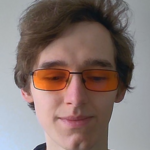Split real Kac-Moody symmetric spaces have been introduced and studied by Freyn, Hartnick, Horn and the PI. One key property is boundary rigidity: there is a one-to-one correspondence between the automorphisms of a split real Kac-Moody symmetric space and the automorphisms of the twin building embedded in the future and past causal directions of the boundary.
One goal of this project is to generalize boundary rigidity to complex Kac-Moody symmetric spaces and to use Galois descent in order to introduce and study almost split real Kac-Moody symmetric spaces.
Furthermore, Freyn, Hartnick, Horn and PI have established that the question whether the causal structure of a split real Kac-Moody symmetric admits time travel is equivalent to the question whether Kostant convexity fails for Kac-Moody groups. Conjecturally, Kostant convexity holds and, thus, time travel is impossible in Kac-Moody symmetric spaces. Another goal of this project is to confirm this conjecture.
Publications
We prove an analogue of Kostant's convexity theorem for split real and complex Kac-Moody groups associated to free and cofree root data. The result can be seen as a first step towards describing the multiplication map in a Kac-Moody group in terms of Iwasawa coordinates. Our method involves a detailed analysis of the geometry of Weyl group orbits in the Cartan subalgebra of a real Kac-Moody algebra. It provides an alternative proof of Kostant convexity for semisimple Lie groups and also generalizes a linear analogue of Kostant's theorem for Kac-Moody algebras that has been established by Kac and Peterson in 1984.
Related project(s):
61At infinity of symmetric spaces
Kac-Moody symmetric spaces have been introduced by Freyn, Hartnick, Horn and the first-named author for centered Kac-Moody groups, that is, Kac-Moody groups that are generated by their root subgroups. In the case of non-invertible generalized Cartan matrices this leads to complications that -- within the approach proposed originally -- cannot be repaired in the affine case. In the present article we propose an alternative approach to Kac-Moody symmetric spaces which for invertible generalized Cartan matrices provides exactly the same concept, which for the non-affine non-invertible case provides alternative Kac-Moody symmetric spaces, and which finally provides Kac-Moody symmetric spaces for affine Kac-Moody groups. In a nutshell, the original intention by Freyn, Hartnick, Horn and Köhl was to construct symmetric spaces that likely lead to primitive actions of the Kac-Moody groups; this, of course, cannot work in the affine case as affine Kac-Moody groups are far from simple.
Related project(s):
61At infinity of symmetric spaces
We determine the fundamental groups of symmetrizable algebraically simply connected split real Kac-Moody groups endowed with the Kac-Peterson topology. In analogy to the finite-dimensional situation, the Iwasawa decomposition G=KAU provides a weak homotopy equivalence between K and G, implying π1(G)=π1(K). It thus suffices to determine π1(K) which we achieve by investigating the fundamental groups of generalized flag varieties. Our results apply in all cases in which the Bruhat decomposition of the generalized flag variety is a CW decomposition − in particular, we cover the complete symmetrizable situation; the result concerning the structure of π1(K) more generally also holds in the non-symmetrizable two-spherical situation.
| Journal | Transformation Groups |
| Volume | 28 |
| Pages | 769–802 |
| Link to preprint version | |
| Link to published version |
Related project(s):
61At infinity of symmetric spaces
We consider the subalgebras of split real, non-twisted affine Kac-Moody Lie algebras that are fixed by the Chevalley involution. These infinite-dimensional Lie algebras are not of Kac-Moody type and admit finite-dimensional unfaithful representations. We exhibit a formulation of these algebras in terms of N-graded Lie algebras that allows the construction of a large class of representations using the techniques of induced representations. We study how these representations relate to previously established spinor representations as they arise in the theory of supergravity.
| Journal | Communications in mathematical physics |
| Volume | 392 |
| Pages | 89-123 |
| Link to preprint version | |
| Link to published version |
Related project(s):
61At infinity of symmetric spaces
In the present article we introduce and study a class of topological reflection spaces that we call Kac-Moody symmetric spaces. These generalize Riemannian symmetric spaces of non-compact type. We observe that in a non-spherical Kac-Moody symmetric space there exist pairs of points that do not lie on a common geodesic; however, any two points can be connected by a chain of geodesic segments. We moreover classify maximal flats in Kac-Moody symmetric spaces and study their intersection patterns, leading to a classification of global and local automorphisms. Unlike Riemannian symmetric spaces, non-spherical non-affine irreducible Kac-Moody symmetric spaces also admit an invariant causal structure. For causal and anti-causal geodesic rays with respect to this structure we find a notion of asymptoticity, which allows us to define a future and past boundary of such Kac-Moody symmetric space. We show that these boundaries carry a natural polyhedral structure and are cellularly isomorphic to the halves of the geometric realization of the twin buildings of the underlying split real Kac-Moody group. We also show that every automorphism of the symmetric space is uniquely determined by the induced cellular automorphism of the future and past boundary. The invariant causal structure on a non-spherical non-affine irreducible Kac-Moody symmetric space gives rise to an invariant pre-order on the underlying space, and thus to a subsemigroup of the Kac-Moody group. We conclude that while in some aspects Kac-Moody symmetric spaces closely resemble Riemannian symmetric spaces, in other aspects they behave similarly to ordered affine hovels, their non-Archimedean cousins.
| Journal | Münster J. Math. |
| Volume | 13 |
| Pages | 1-114 |
| Link to preprint version | |
| Link to published version |
Related project(s):
61At infinity of symmetric spaces
A geodesic γ in an abstract reflection space X (in the sense of Loos, without any assumption of differential structure) is known to canonically admits an action of a 1-parameter subgroup of the group of transvections of X. In this article, we prove an analog of this result stating that, if X contains an embedded hyperbolic plane, then this yields a canonical action of a subgroup of the transvection group of X isomorphic to a perfect central extension of PSL(2,R). This result can be further extended to arbitrary Riemannian symmetric spaces of non-compact type embedded in X and can be used to prove that a Riemannian symmetric space and, more generally, the Kac-Moody symmetric space G/K for an algebraically simply connected two-spherical Kac-Moody group G satisfies a universal property similar to the universal property that the group G satisfies itself.
| Journal | Adv. Geometry |
| Volume | 20 |
| Pages | 499-506 |
| Link to preprint version | |
| Link to published version |
Related project(s):
61At infinity of symmetric spaces
Team Members
Dr. Julius Grüning
Researcher
Christian-Albrechts-Universität zu Kiel
juliusgruening(at)googlemail.com
Prof. Dr. Ralf Köhl
Researcher,
Project leader
Christian-Albrechts-Universität zu Kiel
koehl(at)math.uni-kiel.de
Dr. Christian Vock
Researcher
Christian-Albrechts-Universität zu Kiel
vock(at)math.uni-kiel.de
M.Sc. Paul Zellhofer
Doctoral student
Christian-Albrechts-Universität zu Kiel
zellhofer(at)math.uni-kiel.de




